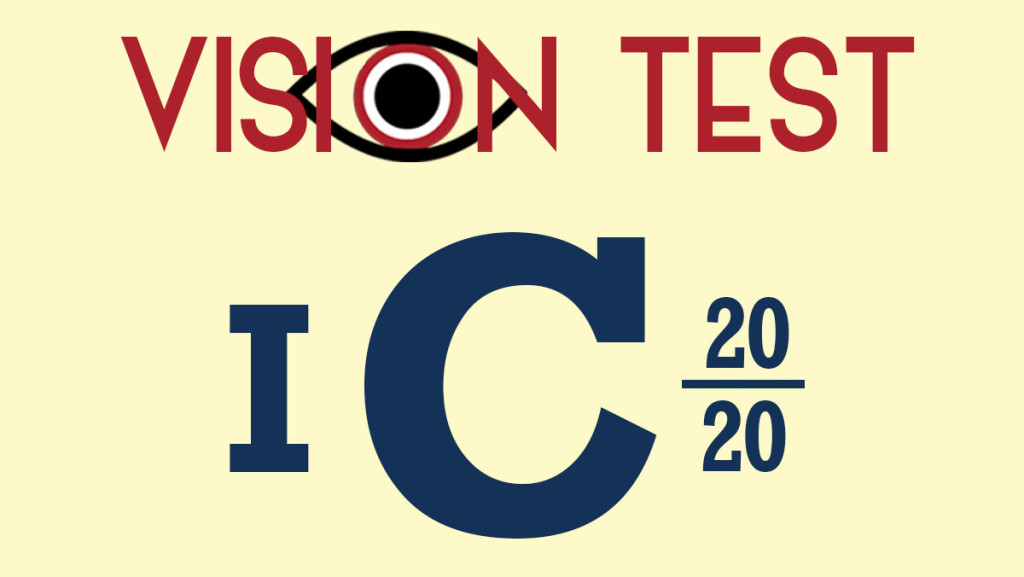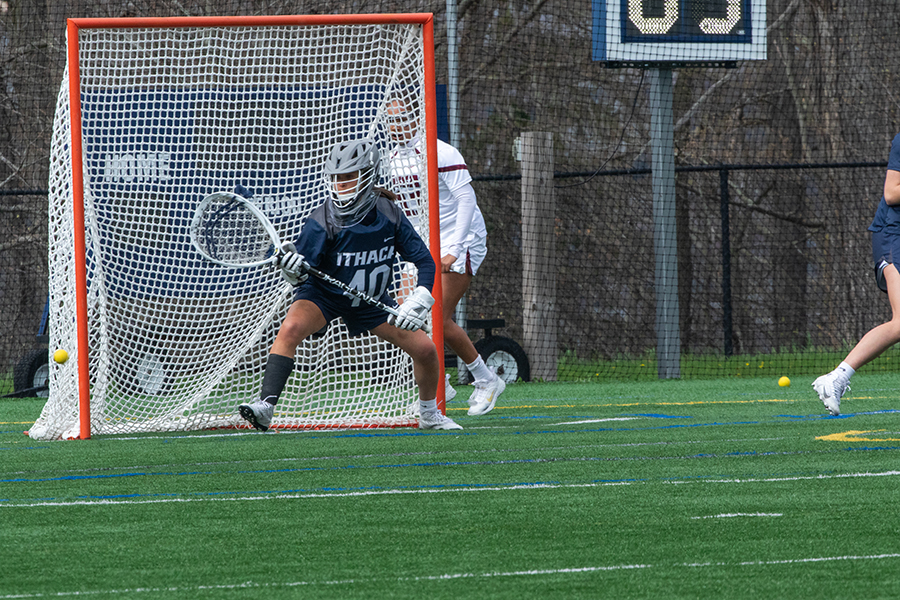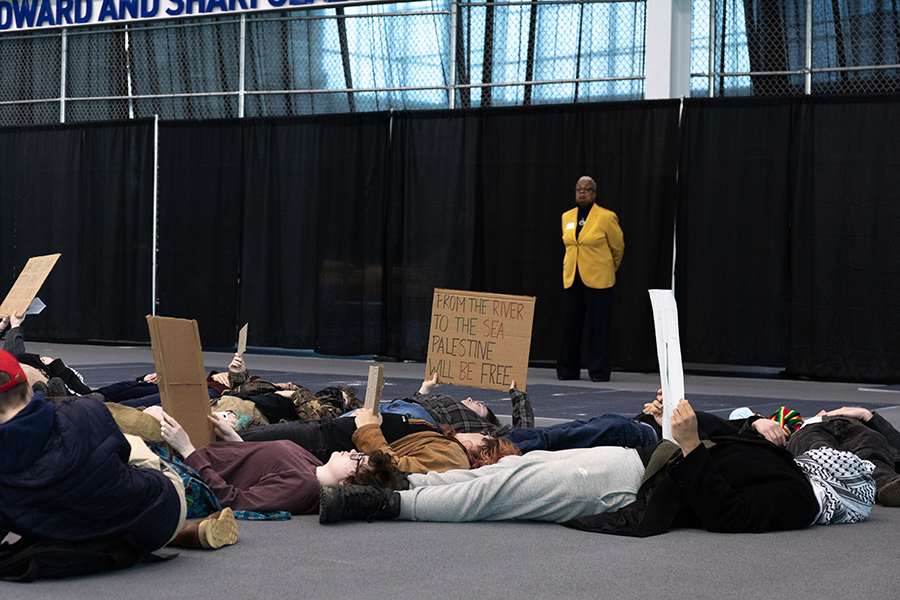Editors Note: On March 5 at an all-college meeting, Ithaca College President Tom Rochon introduced the campus community to a proposal to craft a new vision for the college’s residential, academic and overall experience for each of its constituents. Calling it a “blue-sky” reimagination, Rochon described it as an opportunity to create an ideal vision for the college as though beginning from a blank slate.
Rochon was clear in distinguishing his “blue-sky” from the IC 20/20 initiative, which he said was a strategic plan designed based on the college’s state at the time. Though the origins may differ, the rhetoric is similar: determining the all-encompassing vision for the college.
The Ithacan is evaluating some of the central tenets and initiatives of the IC 20/20 during a time when the college’s overall vision is open to interpretation and reimagination. The IC 20/20 vision includes, among a list of 10 initiatives, rolling out an integrative core curriculum, an enhanced residential learning program, organized diversity programming and global learning opportunities. This package of stories examines these four initiatives’ progress, problems and successes, as well as their roles in contributing to the residential college experience.
Part One: Integrative Core Curriculum faces second-year challenges
Part Two: Infusion of ICC into residence halls experiences mixed reactions
Part Three: Diversity initiatives perceived to fall short of expectations
Part Four: College experiences setback in expansion of international programs
Integrative Core Curriculum faces second-year challenges
As the second year of the implementation of the Integrative Core Curriculum comes to a close, the program is being evaluated by its directors and has experienced mixed reactions from students and faculty, mainly stemming from its key element: the theme requirements.
Danette Johnson, vice provost in the Department of Educational Affairs and outgoing director of the ICC, said the implementation of the ICC has been successful, but the program is considering some reforms: eliminating themes from Ithaca Seminars, reviewing the number of themes and evaluating the ePortfolio. Although some students generally understand the importance and need for the ICC, they say they wish there were more classes offered. Some professors say they wish the program were more simple and there was less bureaucracy involved.
The ICC, approved by the Academic Policy Committee on March 30, 2012, is the college’s first-ever college-wide general education system and serves as part of the college’s IC 20/20 plan, a trustee-approved 10-year vision for the college. The development of the ICC stemmed in part from cross-college collaboration, as well as pressure from The Middle States Commission on Higher Education, the body that has accredited the college since 1955. Established general education is one of the commission’s 14 accreditation standards. Robert Sullivan, associate professor of communications and the former director of the honors program who worked on designing the ICC, said the ICC replaced general education programs which differed by school.
The Class of 2017 was the first to experience the ICC, in the fall of 2013, and each student has between 28 and 45 required credits under the new curriculum, depending on their major.
The ICC requires students to choose from six themes, under which they must take four perspective courses: a creative arts, a social science, a natural science and a humanities course. The themes are intended to promote integrative majors and electives to bridge the gap between schools and disciplines, according to the ICC website.
Other requirements include quantitative literacy and writing credits, and at least one diversity course, as well as a four-credit, first-year seminar that freshmen must take during their first semester. Student must also complete a capstone course and 12 complementary liberal arts credits. In addition, students must upload an artifact to their ePortfolio for each ICC-fulfilling course they take. Artifacts can be any sort of paper, project or activity the student completed for that course.
Other colleges and universities across the nation have established core curricula to help bridge the gap between K-12 and higher educations. Butler University in Indiana also includes a first-year seminar in its core curriculum, and Syracuse University requires students to take courses in natural sciences, social sciences and humanities, as well as meet standards in intensive writing and quantitative literacy.
However, most other schools with these similar core curricula do not possess the theme aspect, which is integral to the ICC.
Johnson said the committee on college-wide requirements was considering eliminating themes from being attached to Ithaca Seminars. She said this was due to not being able to accurately predict how many seminars in each theme would be necessary to meet student demand since themes are selected at orientation. If the committee decides to make this change, she said, it will likely be done for Fall 2016.
Currently, for the Class of 2018, the first-year seminars did not have to be chosen according to the students’ themes, but themes are still attached to the seminars.
Sophomore Griffin Haas said he only picked his Power and Justice theme because the seminar he wanted to take was in the theme, but he was unaware of the other classes offered for Power and Justice.
“By me picking that because of the seminar, I missed out on taking classes I otherwise would have liked to take,” he said
Johnson also said discussions have occurred about reducing the number of themes to increase the number of options in each theme.
“I think a reduction would be more likely than an increase simply because each theme should have a robust number of courses so that there are some options,” she said. “If there are more themes, then the total number of courses would be spread across a larger number of themes, meaning that individual themes might have fewer options.”
Sophomore Maddy Feiner, who is in the Identities theme, said she thought most people pick themes based on the classes that are offered in that theme, instead of picking the theme that they are most interested in.
“My ICC theme has nothing to do with who I am, what I am interested in or my ideal career path,” she said.
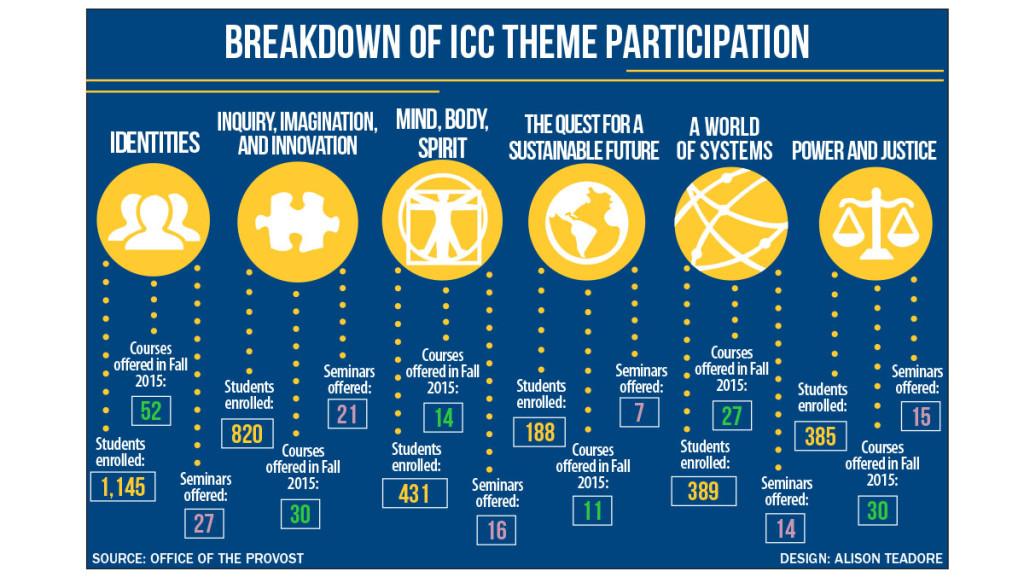 Currently, the Quest for a Sustainable Future theme has the smallest number of classes and students enrolled: 187 students between the classes of 2017 and 2018. Identities has about 1,100 students enrolled, the highest number, but saw a decline from the sophomore to the freshman class, enrolling 680 students in Fall 2013 and then 461 students this fall. Mind, Body, Spirit increased enrollment per class, from 148 in 2013 to 282 this year.
Currently, the Quest for a Sustainable Future theme has the smallest number of classes and students enrolled: 187 students between the classes of 2017 and 2018. Identities has about 1,100 students enrolled, the highest number, but saw a decline from the sophomore to the freshman class, enrolling 680 students in Fall 2013 and then 461 students this fall. Mind, Body, Spirit increased enrollment per class, from 148 in 2013 to 282 this year.
When students get on campus, there is a mixed reaction to the ICC and the themes, Johnson said.
“There are a number of students who really like the idea of the themes and the connections between them,” she said. “There are other students who find the themes constraining.”
Course availability has been a concern of some students, Johnson said. For example, sophomore Tal Aizen, an exercise science major, said he has been frustrated by the perspectives portion of the ICC.
“It’s been difficult to find classes,” he said. “I’m taking eight semesters of natural sciences, but none of them fill the natural science requirement.”
Sullivan said when the ICC was being designed, the themes made the ICC different from integrative gen-ed programs at other schools. He said ICC classes were intended to have been classes designed to specifically fit into each theme, rather than attaching a theme to an already-established class. These purpose-built classes, he said, make students see the connections between different courses in their themes.
“It was supposed to be built almost entirely on built-to-purpose courses in which faculty would say, ‘I’m interested in building a course in this theme’ and it would be populated by students in that theme,” he said.
Another aspect of the ICC which is being reviewed is the ePortfolio, Vincent DeTuri, associate professor in the Department of Chemistry and the recently-hired director of the ICC, said. one of the aspects of the ICC he plans on addressing is the ePortfolio.
“Right now, its a portfolio where you put stuff on there… and then you stop,” he said. “What if there was a way for you to upload signature work… why not make it available to potential employers as a way to showcase what you’ve done at Ithaca College, and something that you would take with you.”
As a television-radio major, Haas said he does not plan on using his portfolio, as he thinks the artifacts from his theme would not be something employers would be looking at.
“They don’t care what I did in Sustainability Principles and Practices. They don’t care what I did in Art Across Cultures. What matters is what I did in TV-R,” he said. “I’m not going to hand them my portfolio and show them a bunch of essays that I wrote in classes that have no pertinence or relevance to the job at all.”
Paula Turkon, an assistant professor in the Department of Environmental Studies and Science, said in her classes, she is helping guide students with the ePortfolio.
“The students themselves don’t seem completely engaged in that process,” she said. “I think they feel a little unsure about what they should be doing.”
Some students, such as sophomore Rosalyn Moisan, say they understand the aims of the ICC but think it needs time to develop.
“I think the ICC has a lot of great potential even though it’s been confusing,” she said. “We’re in the midst of working out the details, and that’s just the reality we have to face. But I think five years down the road, it’ll be better.”
Sophomore Remy Litvin said he has had a positive experience with the ICC.
“I appreciate the program’s goals,” he said. “I’ve been exposed to a lot of classes I would have probably not taken otherwise.”
While professors also appreciate the program’s goals, some say they wish the ICC was simpler and easier to get classes approved. Turkon said she had some difficulties understanding the program and advising students, which would be impossible without the help of the advising center.
A challenge to the implementation of the ICC, Sullivan said, was the lack of previous campus-wide cooperation. He said with the exception of the Honors Program, there had been no previous all-college programs.
“We have no experience in decision-making that accommodates all of the schools,” he said. “We have no tradition, no culture of cooperation. We had never had a genuine cooperative all-college effort in the history of the college. What a surprise, we all got into a big spat when we were given the job.”
Turkon is part of a committee which reviews applications from professors who are trying to designate courses as ICC credits. This committee helps review applications from the professors and make recommendations. Turkon said professors need to provide a syllabus and fill out a form explaining how their classes are integrative, how they meet the learning objectives of different themes and what artifacts may come from the class.
Sullivan said the committee envisioned a program in which professors built courses for specific themes and wanted to ensure that the ICC was not something students did to get out of the way.
“When you hear people talking about a core curriculum as something you get out of the way to do the important stuff, something’s wrong,” he said. “And if that’s the way we’re talking about it, something’s wrong. The other thing we said is, make it simple. I don’t think they made it simple.”
He said implementing a core curriculum is very difficult, and the people currently involved in the implementation are not those who initially were responsible for implementing the ICC: Sullivan’s committee. He said confusion is common in his discussions with faculty.
“There’s been a widespread feeling that we’ve been bogged down in bureaucracy,” he said. “There’s widespread wondering about when we’re going to see the ICC we actually approved.”
At Ithaca Today, the annual event for accepted students, President Tom Rochon pitched the ICC to admitted students who were considering attending the college. Rochon said general education requirements should not just be something to check off a list: They should relate to subjects students are passionate about.
“By taking some of your general education courses connected to a shared theme, you get to see how scientific thinking, humanistic thinking and artistic thinking all fit together to create insight and knowledge you can use in the world, insight that is greater than you would have from any one disciplinary perspective,” he said.
Also a parent of a prospective student, Turkon said the ICC was an appealing aspect of the college for her daughter Bretana because she is entering a specialized program.
“For me, the ICC is a strong draw for her because I think she is going to have a more deliberate basic liberal arts education that I don’t think she would have in the general education curriculum,” she said.
Multiple admitted students who attended Ithaca Today said they were intrigued by the ICC.
Alison Thomson, an admitted student who attended Ithaca Today, said the ICC played a part in her decision to attend the college.
“I liked that I could gear it more towards what I’m interested in, unlike other schools where you have to take this class, this class and that class,” she said.
Madison Barlow, another admitted student who attended Ithaca Today, said although she was unaware of the ICC before Ithaca Today, it would play a role in her decision.
“It’s a cool program, unique and different from the other schools I’m looking at,” she said. “The faculty, students and staff are very interested in what the students do, and it’s exciting.”
DeTuri said he has worked at orientations, and the incoming students he has talked to seemed excited to take courses in themes with different perspectives. He said he was eager to address some of the “growing pains” of the ICC, which occur with any major change.
“Overall, it’s a great way to do a general education program, focusing on liberal arts,” he said. “Tying together various courses under a theme is really unique — it’s not a distribution system.”
Johnson said she thinks the ICC is on its way to becoming the successful integration of the program it was designed to be.
“We still have a long way to go to reach the full potential of the program, but implementing a general education process is a big step. We’ve moved pretty quickly, and I think the launch phase has been successful,” Johnson said. “We need to keep moving it forward so it can reach the potential of what it can be.”
Infusion of ICC into residence halls experiences mixed reactions
Even with new policies this year incentivizing students in First-Year Residential Experience housing to attend FYRE theme events, low attendance and critical feedback from resident assistants have prompted the Office of Residential Life to make some fundamental changes.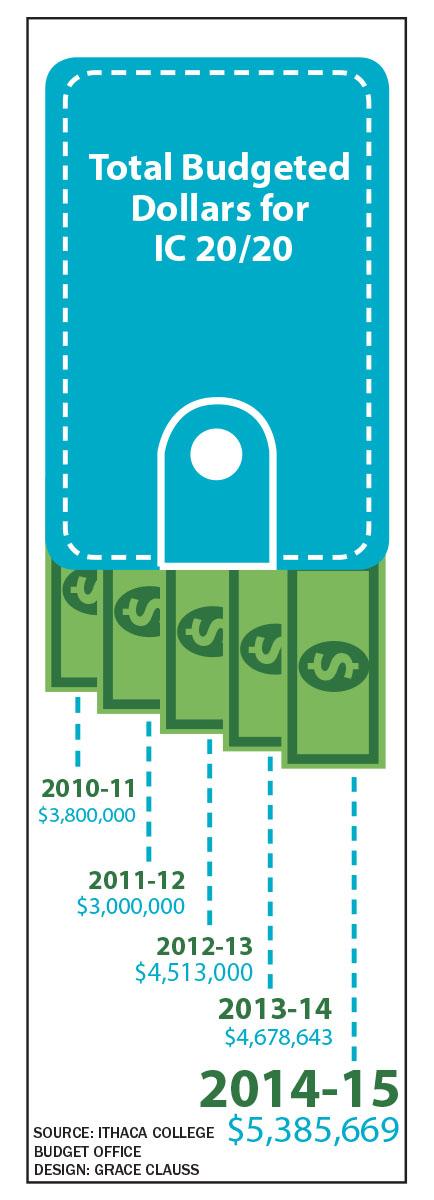
Over the course of the Fall 2014 semester, under the current FYRE structure, a total of about 500 students have attended a theme program, of about 1,550 students in the freshman class on campus, Jacqueline Robilotta, assistant director of residential life, said. In practice, there are many FYRE events that receive zero resident attendees, despite the FYRE Incentive, which enters students who attend theme programs into a raffle to win $2,000 toward their housing for the following year.
French professor Anne Theobald is in her third year as a faculty associate, a faculty member who collaborates with resident assistants on programming, in the Boothroyd-Rowland-Tallcott cluster. Though she was excited about the theme programs to be introduced to the FYRE last year, her first attempt at helping organize one for the World of Systems theme — a game of jeopardy containing facts about the college, Ithaca and BRT — resulted in a party of three: the two resident assistants and her.
“It’s frustrating because there’s a lot of effort that goes into it,” Theobald said. “I really just want to have connections with students who aren’t necessarily in my classes.”
The ICC theme programs are currently organized to draw from students within a particular theme and housing cluster, or group of two to three residence halls. In response to the low-attendance records, Residential Life is transitioning the ICC theme programs from one theme-based model to two different floor-based models, inviting students from a particular floor to the programs regardless of theme, Robilotta said.
“People get more involved organically with their floor than with their theme,” she said.
Junior Sean Themea, an RA in BRT, said he has not had a single event where students from World of Systems came to a World of Systems cross-cluster event. But he said the problem isn’t the subject of the events but the fact that they are supposed to draw from students across clusters, rather than from the floor communities.
“It’s hard to outreach to people I’m not seeing on a daily basis,” he said. “The problem isn’t the merit or the value of the event. I think it just ties back to who is doing the event.”
That’s why sophomore RA Jennifer Francisco said the floor-based model would be more effective at drawing a crowd, as she said it currently does in her floor programs.
“It’s a lot easier to get information out in the floor community,” she said. “People like to go to things with their friends.”
Beginning in Fall 2015, the college will be implementing two different versions of FYRE throughout the housing clusters: the Engaging Perspectives model and the Community Connections model. The Engaging Perspectives model will look at all six themes, implementing floor programs that ask students to showcase and share different elements of their respective themes. The Community Connections model is a departure from the ICC and will include floor events focused on community values and the importance of supporting floor community members and student organizations.
Engaging Perspectives will be implemented in West Tower, the BRT cluster and the Landon-Bogart-Clarke cluster. Community Connections will be in place in East Tower, the Hilliard-Holmes-Hood cluster and the Eastman-Lyon cluster.
Since the launch of the FYRE in 2013, it has seen other systemic changes, including an expansion of exclusively first-year housing to all of the upper- and lower-quad residence halls and towers residence halls in the fall of 2014, and with the floor program remodeling planned for the fall of 2015.
Bonnie Prunty, director of Residential Life, said the two models will be tested out next year to determine whether utilizing the ICC is the most effective academic strategy in the residence halls. This will be the second in a three-year pilot of the FYRE. The first year of the launch, 2013–14, was a developmental year, testing the model on a smaller scale until Residential Life received special funding to fully implement the FYRE for all first-years in 2014–15. Following next year, she said, the FYRE has another year to establish a permanent system before an evaluation of the program will take place.
This is all in an effort to fulfill the vision within the IC 20/20 initiative to implement an “enhanced first-year housing and learning program,” one that would infuse elements of the Integrative Core Curriculum and faculty cooperation into the residential experience.
Whether theme events are cluster- or floor-based, there is one constant: the fusion of the ICC into residential life. Senior Jonathon Cummings, a former RA in the FYRE, said he thinks combining the two — the ICC and the FYRE — simply doesn’t work because students do not have tangible incentives or requirements to participate, unlike in other residential learning communities like the Housing Offering a Multicultural Experience community, which hosts the Martin Luther King Jr. Scholars, the Park Scholars and other interested students.
Senior Justine Gray, also a former RA in the FYRE, said she saw how combining the two could have helped provide academic learning opportunities, especially for students who were looking for new majors or areas of study. However, she said, the reality is students were in class all day and were not interested in more lectures.
“I thought at the time it would give them more opportunities academically, but instead it just burned them out,” she said. “How are you going to connect with anyone when there are only two people at a program, and one of them’s an RA?”
This is a departure from Gray’s experience during her first year as an RA during her sophomore year, prior to the ICC implementation, when she felt there was more of a focus on community.
“Originally, programming in the FYRE model is to help you build a strong community,” Gray said. “I feel like that was my purpose as an RA: to help you adjust, not to stuff some more lectures down your throat and overwhelm you even more your first year away from home.”
Prunty said she doesn’t believe it is the content of the programs that drives students away, but the label. It has been a goal of Residential Life to rethink how the theme events are advertised, particularly in the Engaging Perspectives model next year, where the focus in advertising events will be more on the content and less on one academic theme.
The reasoning behind initially bringing the ICC into the FYRE is based on research showing that students who have connections with faculty outside of the classroom are more likely to connect to the institution and decide to stay, Prunty said.
“We’re not looking to create an academic class experience in the residence halls. But how do we support and build on the learning that’s happened in the class and now help it come into the residence halls and allow students to engage with faculty and staff around those learning discussions and experiences?” she said.
She said her office has looked to the National Resource Center for the First-Year Experience and Students in Transition at the University of South Carolina for direction toward other institutions that are recognized for making the link between academics and residential life. Though the college has drawn inspiration from other schools, she said what they have found is that most other schools have similar struggles with integrating the academic piece in a meaningful and attractive way for students.
But the most fundamental of the issues felt by RAs, Cummings said, was a lack of understanding about the new policies that resulted from bringing the ICC into the FYRE. For Gray, this caused a degree of tension in her staff meetings with FYRE leaders.
“They seemed very defensive of criticisms, which I get,” she said. “It’s a new program, and it’s hard, but it’s also hard for us to implement it when we don’t feel supported in it, and we don’t understand it.”
Themea, on the other hand, said Residential Life leaders have been very receptive to their complaints about attendance and other issues during open forum sessions. He said Residential Life has shown its commitment to listening to students by adjusting the program for next year.
“It goes to show that Res Life, administratively in the higher-ups, are listening and do take input, and we really appreciate that,” Themea said.
Not only is the process stressful for RAs and associates who put considerable thought and energy into programs, Robilotta said, but the learning curve for the FYRE as a whole needs to be considered. She said the FYRE will continue to assess its changes, including a large assessment around this time next year to determine whether it will choose one of the models, or keep or discard both.
“As we’re seeing it at a full scale, we realize that the spirit of it, in my opinion, is still good,” Robilotta said. “We’re helping students transition, we’re helping students build community, we’re helping connect them with faculty and staff, but we just want to make it even better. It’s not perfect right now, but hopefully we can move closer to what students would enjoy in a program and would find some benefit from in the program.”
Diversity initiatives perceived to fall short of expectations
Just two years into the implementation of Ithaca College’s Integrative Core Curriculum, the School of Humanities and Sciences has cut its diversity requirement in half.
More than a hundred faculty members from H&S voted on whether to drop one of the school’s two ICC diversity requirements in late March, with 75 percent of the faculty voting in support of cutting the requirement.
Diversity programming is one of the 10 key initiatives of the IC 20/20, including goals to launch educational and professional programming that draws diverse individuals and groups to the college.
H&S originally had two diversity requirements, while each of the other four schools on campus had only one. This is because before the ICC came along, H&S had two cultural studies requirements — a global perspective and a historical perspective — which were later translated into the diversity requirements of the ICC when it was implemented in Fall 2013.
Danette Johnson, vice provost at the college, said the school’s decision to eliminate one of the requirements does not hinder the diversity initiatives of IC 20/20 but rather puts H&S in line with the rest of the campus.
However, Gustavo Licon, an assistant professor in the Center for the Study of Culture, Race, and Ethnicity, said he was disappointed by the H&S faculty’s vote but was not surprised.
“The fact that when folks received the feedback that students were tight on their schedule, they would identify that eliminating one of the diversity requirements is a remedy to loosening up the requirement on the students,” he said. “[It] is disappointing and, to a certain degree, expected.”
The diversity requirement of the ICC is one of the initiatives of the administration’s overall strategic plan for diversity, and according to the curriculum, students must take at least one diversity course in order to graduate.
These courses are designed to reflect the diversity focus of the college’s mission statement, which states the college values diversity, is committed to promoting equality and aims to teach students about the position of minority groups in society.
Another goal of the diversity requirement is to have students change their perspectives on what diversity means by the time they graduate, Paul Geisler, associate professor and program director of the exercise and sport sciences department, said. Geisler is also a member of the Committee on College Requirements, where he has been serving for a year as a liaison on a diversity subcommittee and is responsible for reviewing proposals for diversity courses that are submitted by faculty.
“It was designed to be much more than the mixing bowl metaphor of diversity,” he said.
So far, the ICC has about 60 approved diversity courses, and five more proposals have been sent out for review.
 Geisler said in his involvement in the approval process, he has seen a steady flow of courses being given the diversity attribution: about six per semester. He said this may be in part a result of the rewriting of the student learning objectives over the course of the 2013–14 academic year, which broadened the definition of the diversity course and “word-smithed” the objectives for clarity.
Geisler said in his involvement in the approval process, he has seen a steady flow of courses being given the diversity attribution: about six per semester. He said this may be in part a result of the rewriting of the student learning objectives over the course of the 2013–14 academic year, which broadened the definition of the diversity course and “word-smithed” the objectives for clarity.
In addition to having the ICC work to engage students in diversity topics in their classes, the administration has prioritized increasing and retaining the number of African, Latino, Asian and Native American students and faculty at the college, Johnson said.
She said one way the administration attempts to do this is by maintaining diversity programs such as the Martin Luther King Scholar Program and the Housing Offering a Multicultural Experience residential learning community.
To promote the hiring and retention of ALANA faculty, Johnson said she has worked with Michelle Rios-Dominguez, manager of diversity and inclusion of the Department of Human Resources, and Belisa Gonzalez, associate professor of sociology and new director of the CSCRE, in developing programming for faculty regarding inclusivity in the hiring process. These workshops teach faculty hiring committees how to be more inclusive during the search process, reviewing applications and writing position descriptions, Johnson said.
In the 2009–10 academic year, when IC 20/20 was first implemented, approximately 8.12 percent of faculty were of a minority ethnic background, according to the Common Data Set from the Office of Institutional Research. This percentage has grown 2.16 percent in the last five years.
Johnson said she believes this promotion and retention of an ALANA community on campus is one of the top priorities when it comes to furthering diversity at the college.
“Genuinely diversifying the people we interact with on a daily basis is, in my view, the most important thing,” she said.
However, she said the administration faces challenges in achieving this diversity because the expenses associated with travel make it difficult to bring in higher numbers of international students. In addition, because other institutions are striving for similar diversity goals, it makes achieving them more competitive.
Johnson said there had been a group working with Traevena Byrd, former associate counsel and director of equal opportunity compliance in legal affairs, and Leslie Kelly, manager of Student Accessibility Services, to address ongoing concerns about accommodations for people with physical disabilities. After Byrd left the college for a position at the University of Maryland, the group continued to collaborate with Kelly on the issue.
“They’re making sure not just big events and classes are accessible but also offices and other services,” she said.
Other initiatives under IC 20/20 diversity include addressing issues of lesbian, gay, bisexual and transgender inclusion on campus. Johnson said the main focus of this has been on inclusivity in residence life, as well as maintaining the Center for LGBT Education, Outreach, and Services as a resource for students. Other opportunities include Pride Prom, the Rainbow Reception, ZAP Panel presentations and the Safe Space program.
Luca Maurer, LGBT education and outreach and services director, said he provides training for Residential Life staff and other groups on campus, as well as specialized consultation for Residential Life staff.
“When my office sponsors visiting guest lecturers or other learning opportunities, I also work with Residential Life to identify which may be of particular benefit to the learning goals and needs of their staff,” Maurer said in an email.
Johnson also said she feels there has been progress in dealing with issues brought up in protests about structural violence and police brutality at the end of the Fall 2014 semester. She said Linda Petrosino, interim provost and vice president in the Department of Educational Affairs, has been meeting with a group of students, faculty and administrators to address issues such as microaggressions, as well as student demands for a structured Native American studies minor.
As a result of these efforts, the administration has been able to hire a full-time faculty member for the Native American studies minor, Michael Taylor, who taught in the anthropology department in the fall of 2014. Johnson said Taylor will be able to supplement the CSCRE course offerings in Native American studies, but only for one year as a sabbatical replacement, which Licon said is not enough. Licon said the minor needs someone on a tenure track.
“The full-time faculty member is a great help, or supplement, but I think what we really need is someone to be hired in Native American studies, so that we can provide a core or base for the minor,” Licon said.
Licon said while he believes the administration genuinely wants to achieve diversity within the college, economic obstacles often push diversity concerns to the background.
“I know, from what I understand in terms of history of diversity program in universities, folks like the idea of diversity, and institutions like to promote how diverse they are, but when there are any economic issues, it’s usually the diversity initiatives that need to go first,” he said. ,” he said. “Diversity becomes a kind of selling point of how inclusive the university is, but when there are any economic issues, it’s usually the diversity initiatives that need to go first.”
Senior Sierra Council, co-executive producer of ICTV’s “The Roundtable,” a new social justice newscast, said she feels the administration has made progress in beginning conversations about diversity issues, but she said there should be more action taking place on campus.
“I think that from the administration, faculty and staff as a collective, I’ve seen a valiant effort,” she said. “There’s more conversation and more use of the word ‘diversity’ in class and at events. But what I haven’t seen is a lot of action that goes behind the words.”
She said to try to motivate this action, the administration should be implementing cultural competency training programs as they relate to specific departments and career fields, as opposed to general diversity instruction. She also said the administration should do more to validate the negative experiences of students, especially those of marginalized groups.
“When people speak up about what they’re experiencing, they get disregarded,” she said. “I think it could lead to some more change if the administration were to say to students, ‘Oh, I get your experience. I hear you.’”
Institutional Research measured in 2009 that 15.42 percent of all undergraduates were of a non-white ethnic background as defined by the college. By the 2014–15 academic year, this percentage had increased by 6.13 percent.
Licon said this growth in numbers of ALANA students does not accurately reflect the progress of these diversity initiatives since it’s more related to the demographic shift of the country as a whole. He said there needs to be a better way to measure the progress of the initiatives.
“I don’t think it’s very clear what IC 20/20 is trying to do when it comes to beyond the stated goals,” he said. “How do we know if diversity has been achieved? How will we measure that?”
Johnson said the Campus Climate Survey, administered in the fall of 2012 and released in the spring of 2015, can serve as a way to measure the IC 20/20’s progress. The survey revealed significant perception gaps between ALANA and LGBT students, faculty and staff and other campus community members on issues like diversity and inclusion. The next survey is scheduled to be administered in 2016.
“One of the positive things is that it serves as a baseline,” Johnson said. “We know where we were at the beginning of IC 20/20. It gives us something to mark against. It tells us, ‘Are we making progress?’ Here are the specific things we need to look at.’”
However, Council said conversation about and examination of diversity issues on campus can only go so far.
“I think Ithaca College as a whole needs to do less talking and more acting,” she said. “If you’re not actually listening to my experience, validating my experience and putting some action behind it, all your words are void.”
College experiences setback in expansion of international programs
As part of Ithaca College’s IC 20/20 global learning opportunity initiative, the college made plans to establish a New York City program as well as a center in Shanghai, China. Although the New York City program has been established and is seeing increased participation, the status for the planned center for Shanghai has returned to its early stages.
Along with the campus in Ithaca, the college has designated Ithaca College programs in London, Los Angeles and New York City. Although New York and LA are located in the United States, they are still considered part of the global learning opportunity initiative in the IC 20/20 plan. The college has been looking toward forming a center in Shanghai, but the development of a Shanghai center has fallen below other priorities.
In 2013, President Tom Rochon traveled to Shanghai Normal University in Shanghai, signing a “Memorandum of Understanding” with the leadership of Shanghai Normal University. This agreement signified both institutions’ shared interest in developing Ithaca College’s Shanghai center at Shanghai Normal University.
Tanya Saunders, assistant provost of international studies and special projects, said the Shanghai program is “back to square one.” After a change in leadership at Shanghai Normal University, Saunders said Rochon needs to return to Shanghai to revalidate the Memorandum of Understanding with the new leadership, but he is currently focused on the college’s comprehensive campaign.
Rochon added that though Shanghai Normal is a prominent contender for a partnership, it is not the only university in Shanghai the college is considering. He said the planning is still in the early stages and that he could not comment on the other potential partners.
“Although we hope to create such a collaboration in the future, in the form of a center modeled on our existing centers in Los Angeles, New York and London, at this moment even the outlines of a China center do not exist,” he said.
Rochon said the IC 20/20 program has many initiatives other than the China center, and the college has five more years to complete them.
“Our focus has been elsewhere during this academic year, meaning, for example, that I did not visit China to continue our dialogue,” he said via email. “With respect to the China program, the gains this year were in making additional connections that will be of help when we renew the direct diplomacy efforts.”
Saunders said establishing the Shanghai center by 2020 is still the goal. She said the college was making good progress before the change in leadership set the plans about one year behind.
“I don’t think we’ll move as fast as we thought we would,” she said. “We’re not doing too badly. We’re learning as we go.”
As for ICNYC, director Hersey Egginton said enrollment is trending upward. This semester’s attendance of 44 students is the second-highest since the program began in 2012 as part of IC 20/20. The IC 20/20 website lists turning the ICNYC program from a pilot into “full swing” as a success for the 2012–13 school year. The 30 students who intend on studying in New York City in the fall will be the highest fall semester enrollment.
Brianna Ryan, a senior who participated in the New York City program during the Fall 2013 semester, said the program was the best semester of her college career and that she would definitely recommend students go to one of the college’s global centers.
“I highly, highly recommend it,” she said. “You get internship experience, you get to explore somewhere new and get to immerse yourself in the culture of the new city. It’s a completely different experience.”
Saunders said the college has done various things as part of the IC 20/20 initiative to bolster study-abroad opportunities. The college has provided funds for the purchase of Studio Abroad, a software program that allows students to apply for study-abroad opportunities online, she said. Also, the Office of International Programs and Studies has been moved to a more central location on campus, in Job Hall, from the Center of Health Sciences. She said the promotion of experiential learning by the college has helped raise the profiles of the off-campus centers, including the London Center and other study-abroad opportunities.
According to the London Center website, the program addresses the experiential learning goals of the IC 20/20 plan. Although the London program has been in operation since 1972, the London program has been growing steadily since 2010, the roll-out of the IC 20/20. During the 2010–11 school year, 169 students attended London, while 184 students attended during the 2014–15 school year. This semester, the 127 students currently studying in London is the highest number for a semester since 2010, and Thorunn Lonsdale, associate director of the London Center, said 123 students have signed up for next fall, compared to only 57 in Fall 2014.
As for Los Angeles, a program for only students in the Roy H. Park School of Communications which has been in operation since 1992 , this year, 149 students have participated, up from 131 students in 2010. During the 2012–13 school year, 206 students attended, the highest amount during the period between 2010 and 2015. On average, 83 students attended each spring, about 63 students attended in the fall and about 27 students attended during the summer.
Stephen Tropiano, director of the Los Angeles Program, said the global learning opportunities offer students experiences they cannot receive on campus.
“In terms of the global learning … what we’re doing is giving students the opportunity to broaden their horizons a little bit to sort of go beyond doing everything on the college campus,” he said.
Lonsdale said an advantage of the satellite campus model is that students are still enrolled at Ithaca College during their time overseas.
“You don’t in any way interrupt your education,” Lonsdale said. “You come to London and you’re at Ithaca College, but you just happened to change the location.”
The other satellite campuses focus on providing internships and a traditional scholarly environment, Saunders said. Egginton, Lonsdale and Tropiano all said their programs offer students immersive internship experiences.
The London and Los Angeles centers both have a dedicated space for students to take classes and collaborate. On the other hand, the New York City program leases classroom space from the Cornell University School of Industrial and Labor Relations Conference Center.
The college also currently has a collaboration with Cornell in Washington, D.C., in which there are five spots reserved in the Cornell-affiliated program in D.C. The college used to have its own program, but the program was suspended in 2011 due to decreasing interest.
Egginton said with the agreement with Cornell in New York City, they are limited in the time they can spend in the building. He said not having an Ithaca College center there is a big disadvantage for the program, but he hopes this will change by 2020.
“I would see it having a space that has the college’s name on the directory — I would have an office as opposed to having to work out of my home — that students could go there at the end of the day and see one another there,” he said.
Students in the New York program and the London program both have to find their own housing.
As the first wave of students under the Integrative Core Curriculum begins to study abroad, an aspect of the IC 20/20 plan which has has not yet been fully established and integrated into the workings of these abroad centers is the ICC. Saunders said she did not think the ICC would discourage students from studying abroad, as with the current sophomore class she has seen no decrease in the number of students studying abroad. Also, the ICC committee created a method for students to petition for a class they are going to take abroad to qualify as part of the ICC.
Egginton said the New York program offers one ICC course but is planning on adding more in the future.
“That’s an anticipated next step,” he said. “The whole process is to get students so they can apply their learning from the classroom into the real world. So where would be better for that than New York or one of the other centers?”
Lonsdale said the London program offers six ICC courses under themes and one writing intensive course, and that well-rounded opportunities are what make the global learning opportunities such a valuable resource to students.
“If your credits transfer as normal and your tuition fees are no more, why would you not choose to have a foreign or a global experience in terms of understanding the worlds you live in?” she said.


